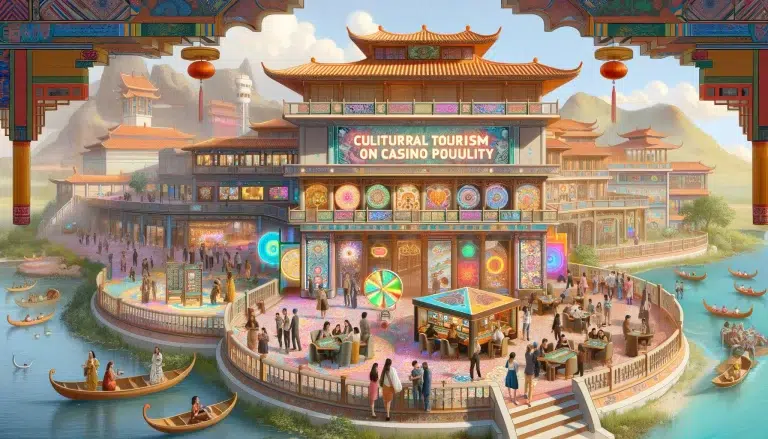The intersection of cultural tourism and casino entertainment is creating a dynamic synergy that is reshaping the appeal and functionality of casinos around the world. As travel becomes more about immersive experiences, casinos are not only venues for gambling but also cultural hubs that offer a blend of local traditions, entertainment, and hospitality. This trend is significantly boosting the popularity of casinos as key attractions in travel destinations, enhancing both their economic impact and their contribution to cultural exchange.
The Convergence of Culture and Casino Entertainment
Casinos are increasingly incorporating cultural elements into their design, operations, and marketing strategies. This can include architectural styles that reflect the local heritage, exhibitions of local art, and entertainment acts that showcase traditional music and dance. By doing so, casinos attract not just gamblers but also culturally curious tourists who are looking for a comprehensive travel experience.
Economic Benefits of Cultural Casinos
The fusion of casinos with cultural tourism brings substantial economic benefits. Tourists drawn by cultural activities tend to stay longer and spend more, contributing not only to the casinos’ revenues but also to the local economy through accommodation, dining, and shopping. Moreover, cultural tourists are often repeat visitors who come back to explore more deeply the cultural fabric of the destination.
Enhancing the Tourist Experience
Casinos that offer cultural experiences provide tourists with a unique value proposition. For example, visitors can learn about indigenous cultures, participate in traditional games, or attend themed events that celebrate local festivals. This not only enriches their travel experience but also gives them a reason to choose one casino over another, particularly in regions where gambling venues are plentiful.
Challenges and Considerations
Integrating culture into casinos is not without its challenges. There is a delicate balance to maintain in ensuring that the cultural representations are respectful and authentic. There is also the risk of cultural commodification, where elements of a culture are reduced to stereotypes or exploited for commercial gain. Casinos must navigate these issues thoughtfully to avoid cultural insensitivity or backlash.
Case Studies of Success
Several casinos have successfully integrated cultural tourism into their operations. For instance, some resorts in Asia offer tea ceremonies and calligraphy workshops, providing a taste of local traditions alongside luxury gambling experiences. In Native American gaming resorts, casinos provide educational programs about tribal history and culture, which have been well received by visitors seeking a deeper understanding of the area’s indigenous peoples.
Future Directions
As the global tourism landscape continues to evolve, the role of cultural elements in casinos is expected to grow. Future developments might include more interactive and immersive cultural exhibits, partnerships with local cultural institutions, and even technology-driven experiences like virtual reality tours of historical sites.
Conclusion
The impact of cultural tourism on casino popularity is profound and multifaceted. By blending gaming with cultural experiences, casinos not only enhance their appeal but also contribute to a richer, more diversified tourist economy. This synergy not only makes economic sense but also promotes a greater understanding and appreciation of local cultures among international visitors. As casinos continue to explore and expand these cultural dimensions, they will likely redefine entertainment tourism and set new standards in the hospitality industry.

David Garato is a luminary in gaming journalism, renowned for peeling back the curtain on the gaming world with his witty and insightful commentary. A decade into weaving stories from the pixelated edges of indie games to the expansive universes of AAA titles, David’s work is a thrilling blend of analysis and adventure. When not writing, he’s live-streaming, sharing his gaming exploits with an engaged and growing audience. David doesn’t just write about games; he lives them, making him a trusted guide in the gaming community.


